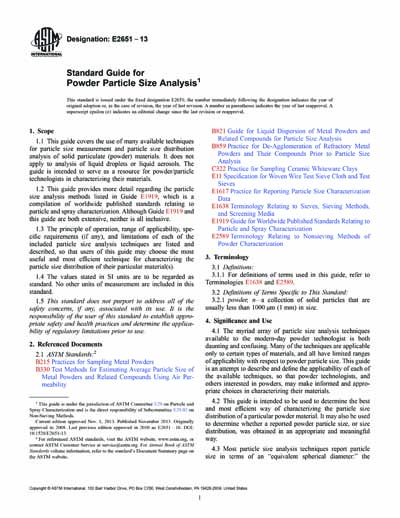Historical
ASTM E2651-13
Standard Guide for Powder Particle Size Analysis
1.1 This guide covers the use of many available techniques for particle size measurement and particle size distribution analysis of solid particulate (powder) materials. It does not apply to analysis of liquid droplets or liquid aerosols. The guide is intended to serve as a resource for powder/particle technologists in characterizing their materials.
1.2 This guide provides more detail regarding the particle size analysis methods listed in Guide E1919, which is a compilation of worldwide published standards relating to particle and spray characterization. Although Guide E1919 and this guide are both extensive, neither is all inclusive.
1.3 The principle of operation, range of applicability, specific requirements (if any), and limitations of each of the included particle size analysis techniques are listed and described, so that users of this guide may choose the most useful and most efficient technique for characterizing the particle size distribution of their particular material(s).
1.4 The values stated in SI units are to be regarded as standard. No other units of measurement are included in this standard.
1.5 This standard does not purport to address all of the safety concerns, if any, associated with its use. It is the responsibility of the user of this standard to establish appropriate safety and health practices and determine the applicability of regulatory limitations prior to use.
Content Provider
ASTM International [astm]






